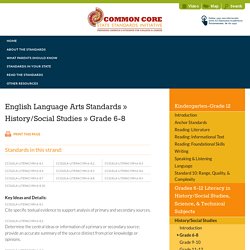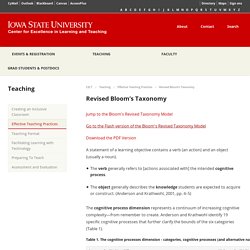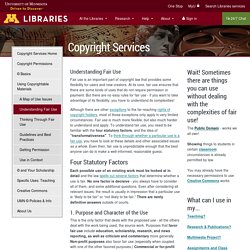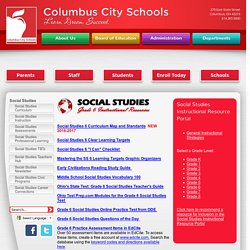

Context Clues 508. History/Social Studies » Grade 6-8. Key Ideas and Details: CCSS.ELA-Literacy.RH.6-8.2Determine the central ideas or information of a primary or secondary source; provide an accurate summary of the source distinct from prior knowledge or opinions.

CCSS.ELA-Literacy.RH.6-8.3Identify key steps in a text's description of a process related to history/social studies (e.g., how a bill becomes law, how interest rates are raised or lowered). Gc daily student tracking form. Rosenshine. 6 Hand Signals That Bring Learning to Life. Editor's note: This piece is co-authored by Ellie Cowen and Megan Nee, a second-grade teacher at Brophy Elementary in Framingham, Massachusetts.

Imagine that you're a student. Your class has just learned something new. Your teacher asks for someone to share his or her strategy for the problem that you've just solved. You're beginning to feel as though you understand the new concept, and you have a strategy that you could share, but something is holding you back. KidzSearch. Directions for Folded Books. A great way to encourage student writing in any content area is through the use of hands-on activities such as folded books.

Because the books are student made, they take ownership of the project and invest more time and effort into the work. Below you will find directions to a wide variety of foldables. Tips on Folding Books Websites on Folded Books: Folded Books (Kite, Clover, Heart) Accordion Fold Book - PDF. Revised Bloom’s Taxonomy – CELT. Jump to the Bloom's Revised Taxonomy Model Go to the Flash version of the Bloom's Revised Taxonomy Model Download the PDF Version A statement of a learning objective contains a verb (an action) and an object (usually a noun).

The verb generally refers to [actions associated with] the intended cognitive process. The object generally describes the knowledge students are expected to acquire or construct. Understanding Fair Use. Fair use is an important part of copyright law that provides some flexibility for users and new creators.

At its core, fair use ensures that there are some kinds of uses that do not require permission or payment. Social Studies 6 Resources. Note: This course uses a standards-based approach to the study of the Eastern Hemisphere.

Units are built around learning targets, rather than specific regions of the Eastern Hemisphere. Within each unit, there is wide latitude for teachers and students to use maps, examples, case studies, etc. from various regions to illustrate the key concepts and skills in the unit. The learning targets in Unit 1 are foundational and skills targets that should reinforced throughout the study of the Eastern Hemisphere. There are also other natural connections between learning targets in different units (e.g. economics and trade in history) that should be made.
See the Clear Learning Targets for unpacked targets, instructional strategies, and assessment tasks. Instructional Resources by Unit. Test Specifications G6 SocialStudies. Grade 6 Social Studies Model Curriculum April2014. These 18 practices are proven effective for teaching reading. These 18 practices are proven effective for teaching reading What works when you teach reading?

These 18 teaching practices have been shown effective by reading researchers. Some are for beginning readers, some for older readers, and some for readers of all ages. 1. Focus on meaning Comprehension is the number one, most important goal of reading! Parents: 19 Meaningful Questions You Should Ask Your Child's Teacher. Back-to-school content is usually focused on teachers and students, and as these two groups will have the largest workload ahead of them, that makes sense.

But for students, the ultimate support system is not an expert teacher, but an informed and supportive family. One of the most significant challenges facing formal education in the United States is the chasm separating schools and communities. The more informed a family is, the more seamlessly they'll connect to so many other edu-constructs, from extracurricular activities and tutoring to reading programs and school-related events.
Finley-53ways-check-for-understanding.pdf. 138 Influences Related To Achievement - Hattie effect size list. John Hattie developed a way of synthesizing various influences in different meta-analyses according to their effect size (Cohen’s d). In his ground-breaking study “Visible Learning” he ranked 138 influences that are related to learning outcomes from very positive effects to very negative effects. Hattie found that the average effect size of all the interventions he studied was 0.40. Therefore he decided to judge the success of influences relative to this ‘hinge point’, in order to find an answer to the question “What works best in education?”
Originally, Hattie studied six areas that contribute to learning: the student, the home, the school, the curricula, the teacher, and teaching and learning approaches. (The updated list also includes the classroom.) Methods for assessing group work. Group work in the classroom: types of small groups. My ORC Collection > View a Folder. Thinking Like a Historian. Bringing History Home. Bringing History Home. C3-Framework-for-Social-Studies. Stanford History Education Group. 5 Ways You Can Benefit From Teaching Channel's Website. Instructional Shifts in Social Studies - Google Docs.